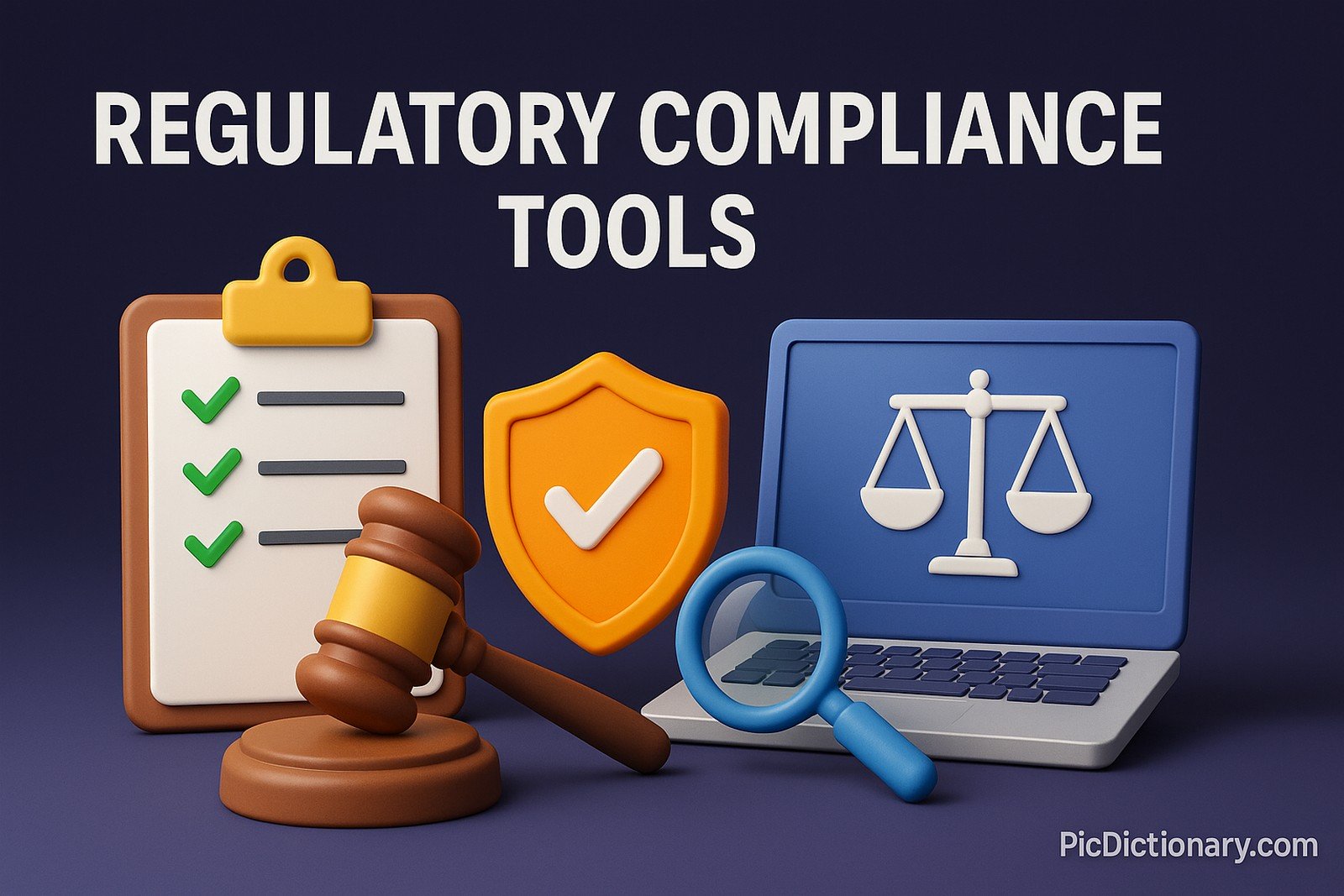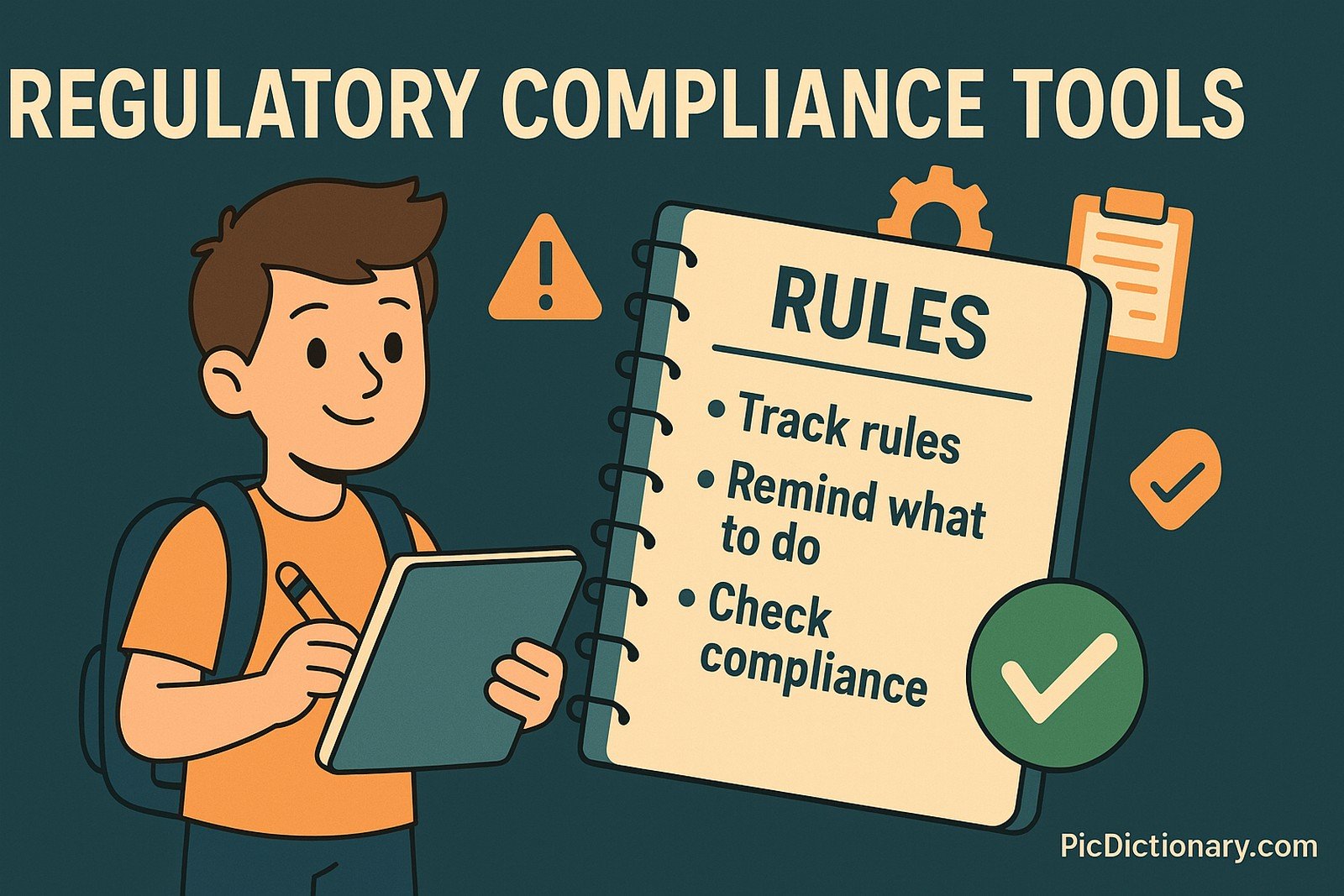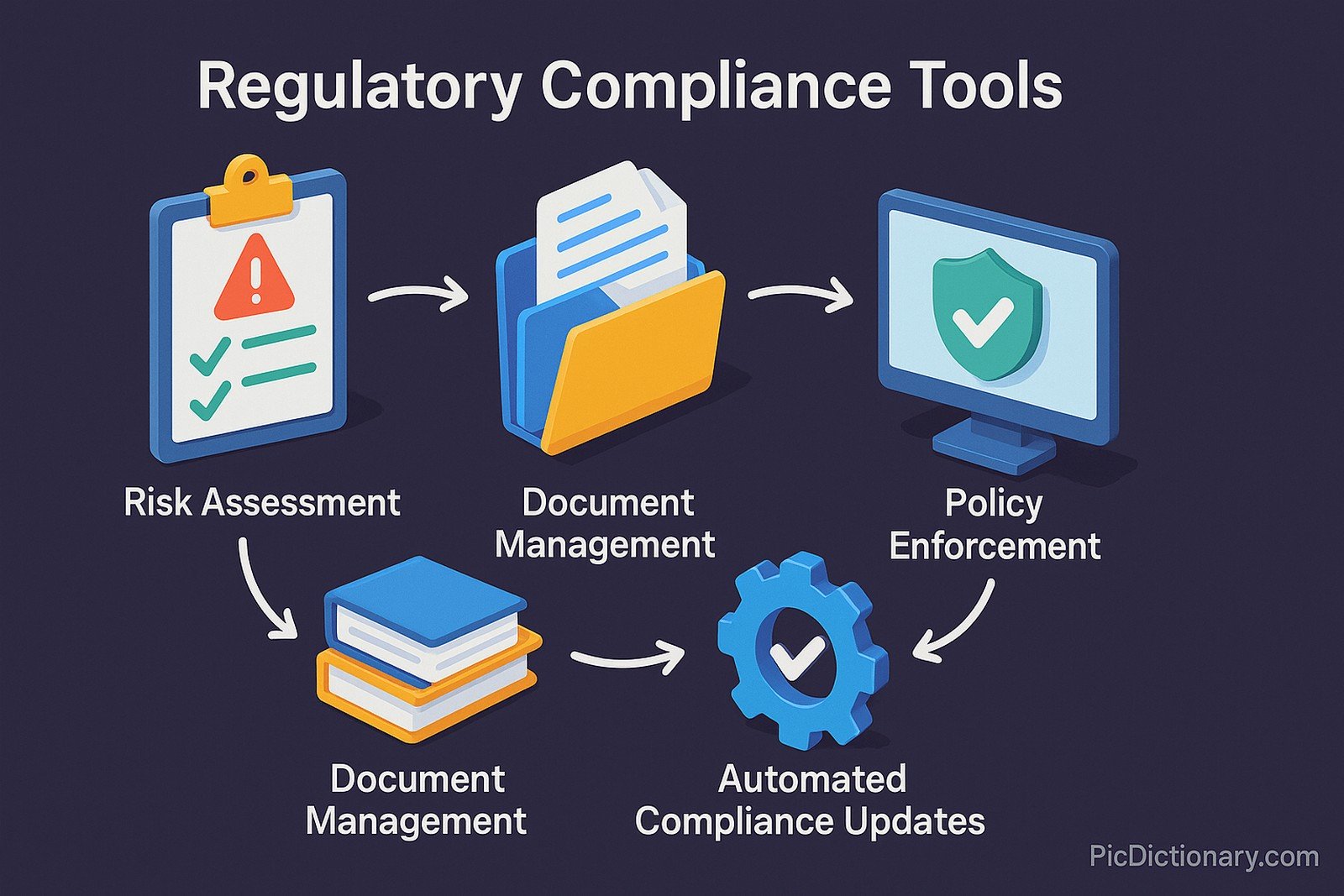Regulatory Compliance Tools

Quick Navigation:
- Regulatory Compliance Tools Definition
- Regulatory Compliance Tools Explained Easy
- Regulatory Compliance Tools Origin
- Regulatory Compliance Tools Etymology
- Regulatory Compliance Tools Usage Trends
- Regulatory Compliance Tools Usage
- Regulatory Compliance Tools Examples in Context
- Regulatory Compliance Tools FAQ
- Regulatory Compliance Tools Related Words
Regulatory Compliance Tools Definition
Regulatory compliance tools are software solutions designed to help organizations adhere to legal, industry, and security regulations. These tools automate compliance tracking, reporting, and auditing, ensuring that businesses meet the required standards without manual intervention. Common functionalities include risk assessment, document management, policy enforcement, and automated compliance updates.
Regulatory Compliance Tools Explained Easy
Imagine you have to follow a lot of complicated rules at school to avoid getting into trouble. Regulatory compliance tools are like a special notebook that keeps track of all the rules, reminds you what to do, and helps you check if you are following them correctly. Businesses use these tools to make sure they don’t break any important laws or rules.
Regulatory Compliance Tools Origin
The need for regulatory compliance tools arose as businesses faced increasing regulations in areas like finance, healthcare, and cybersecurity. In the late 20th century, organizations relied on manual tracking and paper-based compliance reports. As technology advanced, digital solutions emerged, streamlining compliance processes and reducing the risk of human error.
Regulatory Compliance Tools Etymology
The phrase “regulatory compliance tools” comes from the words “regulatory,” meaning related to rules and regulations, and “compliance,” which refers to following those rules. "Tools" indicates the software or systems that help manage compliance.
Regulatory Compliance Tools Usage Trends
The use of regulatory compliance tools has grown significantly due to increasing global regulations. Industries such as finance, healthcare, and data security now depend on these tools to meet government and industry standards. With advancements in artificial intelligence and automation, compliance tools have become more efficient, providing real-time monitoring and predictive compliance analytics.
Regulatory Compliance Tools Usage
- Formal/Technical Tagging:
- Governance, Risk, and Compliance (GRC)
- Cybersecurity Compliance
- Legal and Regulatory Technology - Typical Collocations:
- "compliance management system"
- "regulatory reporting tool"
- "risk assessment software"
- "automated compliance solutions"
Regulatory Compliance Tools Examples in Context
- A financial institution uses compliance software to monitor transactions for fraudulent activities and ensure regulatory adherence.
- Healthcare providers implement regulatory compliance tools to safeguard patient data under HIPAA regulations.
- A multinational company utilizes automated compliance software to track changes in international tax laws and adjust financial reports accordingly.
Regulatory Compliance Tools FAQ
- What are regulatory compliance tools?
Regulatory compliance tools are software solutions that help businesses adhere to legal and industry regulations through automation and monitoring. - Why are compliance tools important?
They reduce legal risks, enhance security, and ensure companies meet industry standards without manual oversight. - Which industries use regulatory compliance tools?
Finance, healthcare, cybersecurity, and manufacturing rely on these tools to manage regulatory requirements. - What features do regulatory compliance tools offer?
Common features include automated audits, real-time monitoring, risk assessment, and regulatory updates. - Are compliance tools customizable?
Yes, many tools allow customization based on industry-specific regulations and company policies. - How do compliance tools help with data protection?
They provide encryption, access control, and activity monitoring to ensure compliance with data protection laws like GDPR and HIPAA. - Can small businesses benefit from compliance tools?
Absolutely! Many solutions are scalable and offer tailored compliance support for small and medium-sized enterprises. - What is the difference between GRC and compliance tools?
Governance, Risk, and Compliance (GRC) software includes compliance management but also addresses broader risk and governance concerns. - Do regulatory compliance tools use artificial intelligence?
Yes, modern tools leverage AI for predictive compliance, automated audits, and fraud detection. - How can companies ensure their compliance tools remain effective?
Regular updates, employee training, and integration with evolving regulations ensure continued compliance effectiveness.

Regulatory Compliance Tools Related Words
- Categories/Topics:
- Risk Management
- Compliance Automation
- Legal Tech
Did you know?
The first regulatory compliance software was introduced in the 1990s, mainly for financial institutions managing risk and regulatory filings. Today, AI-driven compliance tools can predict regulatory changes, helping businesses prepare for new laws before they even take effect.
PicDictionary.com is an online dictionary in pictures. If you have questions or suggestions, please reach out to us on WhatsApp or Twitter.Authors | Arjun Vishnu | @ArjunAndVishnu

I am Vishnu. I like AI, Linux, Single Board Computers, and Cloud Computing. I create the web & video content, and I also write for popular websites.
My younger brother, Arjun handles image & video editing. Together, we run a YouTube Channel that's focused on reviewing gadgets and explaining technology.



Comments powered by CComment